The experts in boutique travel To Peru and South America
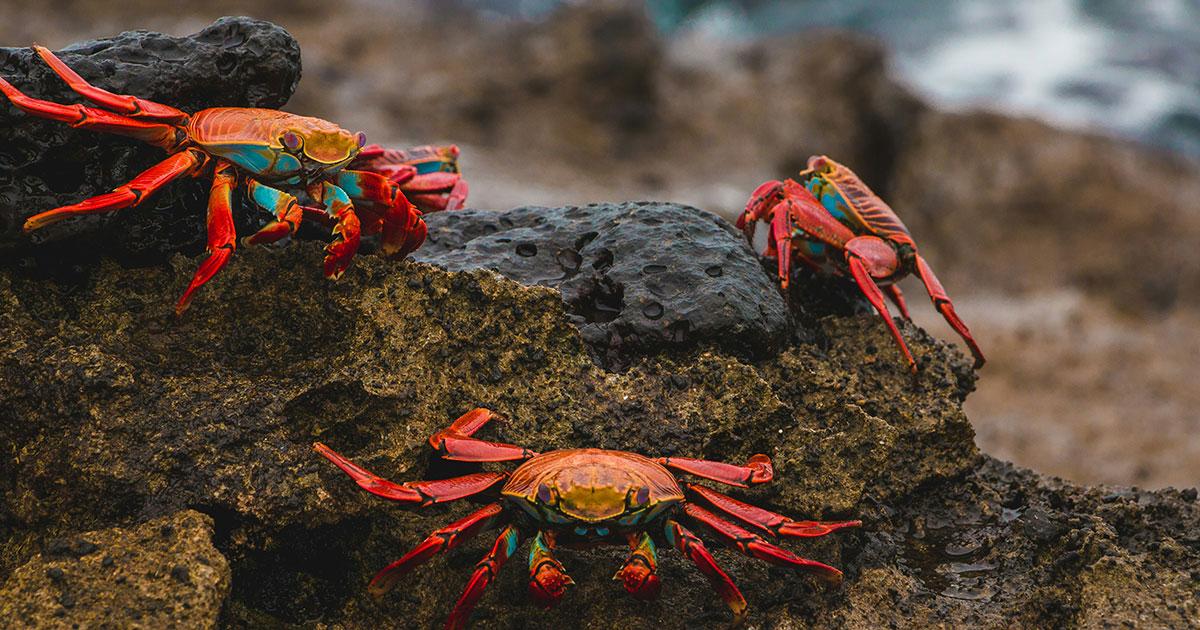
The Galapagos Islands are an absolute natural paradise, and one might ask what the best way is to explore these jewels. Well, fortunately, there is no wrong way to visit the Galapagos! Each of the 14 visitable islands has its own unique attractions and activities, and they all enjoy a mild climate year-round, meaning there is never a bad time to visit either. While there is no wrong way or bad time to visit, below we will focus on presenting the 11 most popular islands, along with their top attractions, activities, and wildlife. Additionally, you will find some basic facts and practical information, which is especially important when deciding whether to take a Galapagos cruise or opt for an island-hopping package.
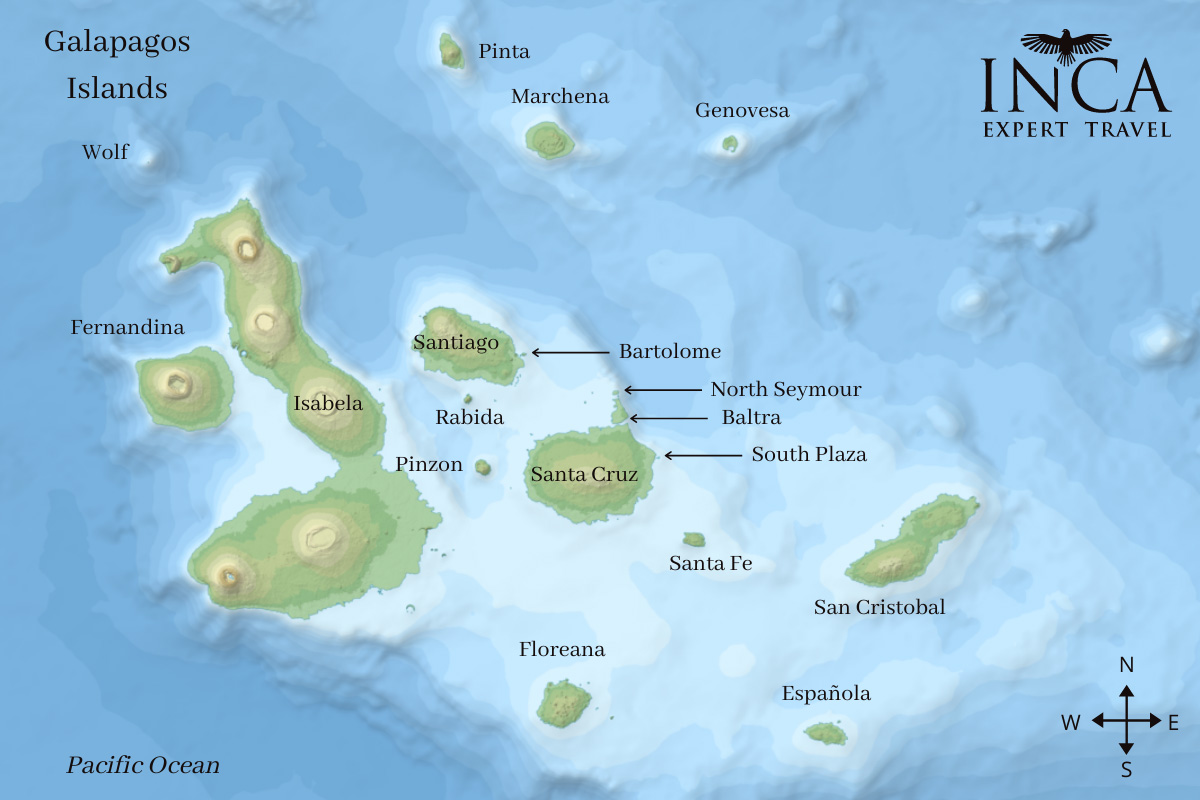
A map of the Galapagos Islands
Santa Cruz Island is the most populous and second-largest of the islands, and with its central location, it also acts as the central hub of the Galapagos Islands.
Puerto Ayora, its largest town, has the best-developed tourist infrastructure in the entire archipelago and is home to many of the Galapagos’ top restaurants and luxurious hotels. It usually serves as the base for island-hopping itineraries. Here, you can also visit the Charles Darwin Research Station , a UNESCO-founded center that was built in 1959. Its aim is to study and conserve the precious wildlife living on the islands, and it is responsible for the restoration of the threatened Giant Galapagos tortoise.
A short drive from the town is one of the Galapagos’ most picturesque beaches, Tortuga Bay. The arid coastline is home to marine iguanas, brown pelicans, and Sally Lightfoot crabs. In contrast, the interior of the island is made up of lush, green highlands, where you can visit giant tortoise reserves and Los Gemelos, the twin pit craters. These sinkholes were formed by parts of the ground collapsing on the empty chambers below. Walk through underground lava tunnels and learn about the geological formations of the island.
The northern tip of Santa Cruz Island is conveniently located near Baltra Airport, one of only two airports with flights to mainland Ecuador.
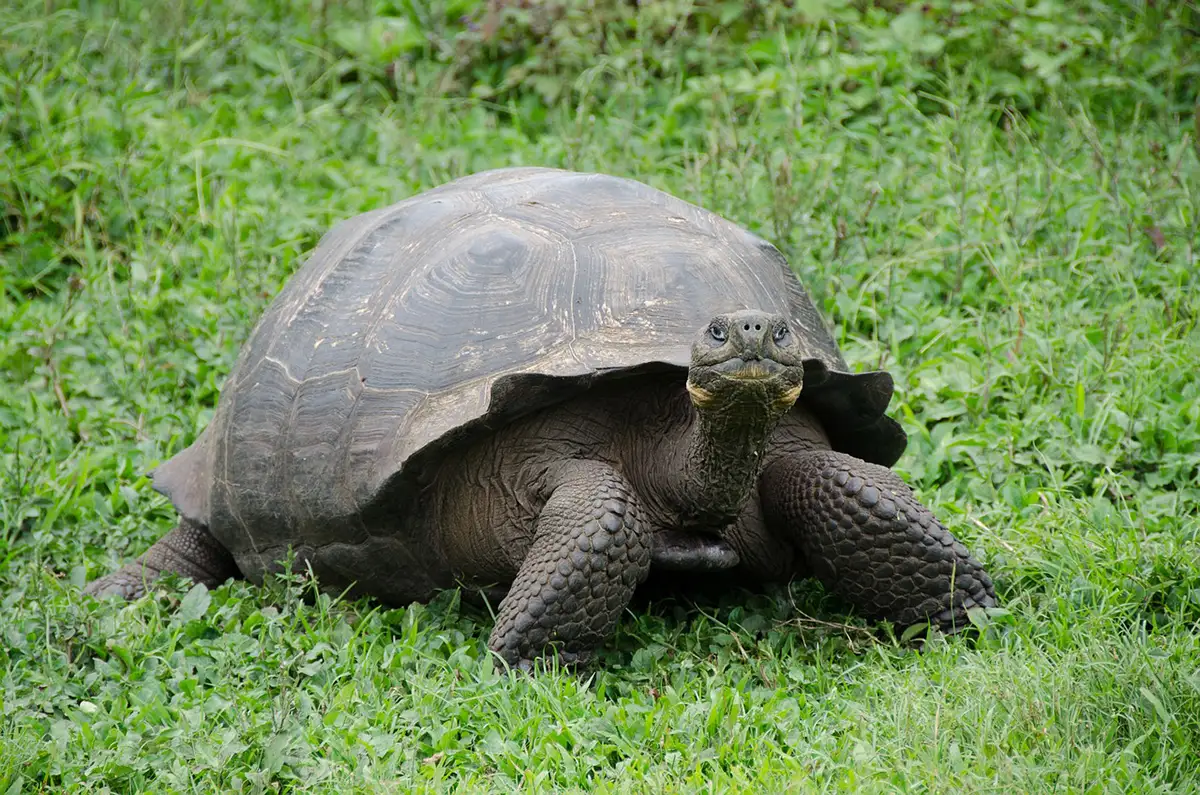
Galapagos giant tortoise. Photo by pen_ash on Pixabay.
Its proximity to Baltra Airport means cruise itineraries often start and finish here. Cruise companies will pick up guests from Baltra Island and transfer them to the harbor at Puerto Ayora. From there, they can board their cruise ship and set sail.
Isabela Island is notable for being the largest of the whole archipelago. This seahorse-shaped island was formed by a merger of six impressive volcanoes. Five of them remain active, meaning that eruptions are still common occurrences. Wolf volcano stands at 5,600 feet (1,707 m) above sea level, making it the highest point in the Galapagos. Meanwhile, hiking the Sierra Negra Volcano is a top attraction, as it has the second-largest active crater in the world. Before the volcanic islands joined to form what is now Isabela, each was home to a separate subspecies of tortoise. Thus, the island has more types of giant tortoises than the rest of the islands combined. Learn more about each of these gentle giants at the Tortoise Center of Isabela.
Board a dinghy and head to Las Tintoreras, a group of small islets off the coast. This area is home to many marine iguanas and Galapagos penguins. The tranquil turquoise water also provides a perfect habitat for sea lions, sea turtles, marine iguanas, rays, and other species.
Punta Vicente Roca and Elizabeth Bay are also worth a visit for their impressive diving and snorkeling opportunities. Swim among green turtles, white-tipped sharks, and giant seahorses.
Another highlight is Tagus Cove, a crater lagoon filled with sea life. Pirates and whalers once passed through here, some of whom left their names etched on the rocky cliffs. This is also a great place to see landbirds, including ground and tree finches, hawks, yellow warblers, large-billed flycatchers, and the occasional woodpecker finch.
In the south of the island, you can find one of the few human settlements in the Galapagos, Puerto Villamil. It contains some basic tourist facilities, including hotels and restaurants.
The Wall of Tears, which is approximately three miles west of Puerto Villamil, is also worth a visit. It was built by prisoners and is a somber reminder of the island’s history as a former penal colony.
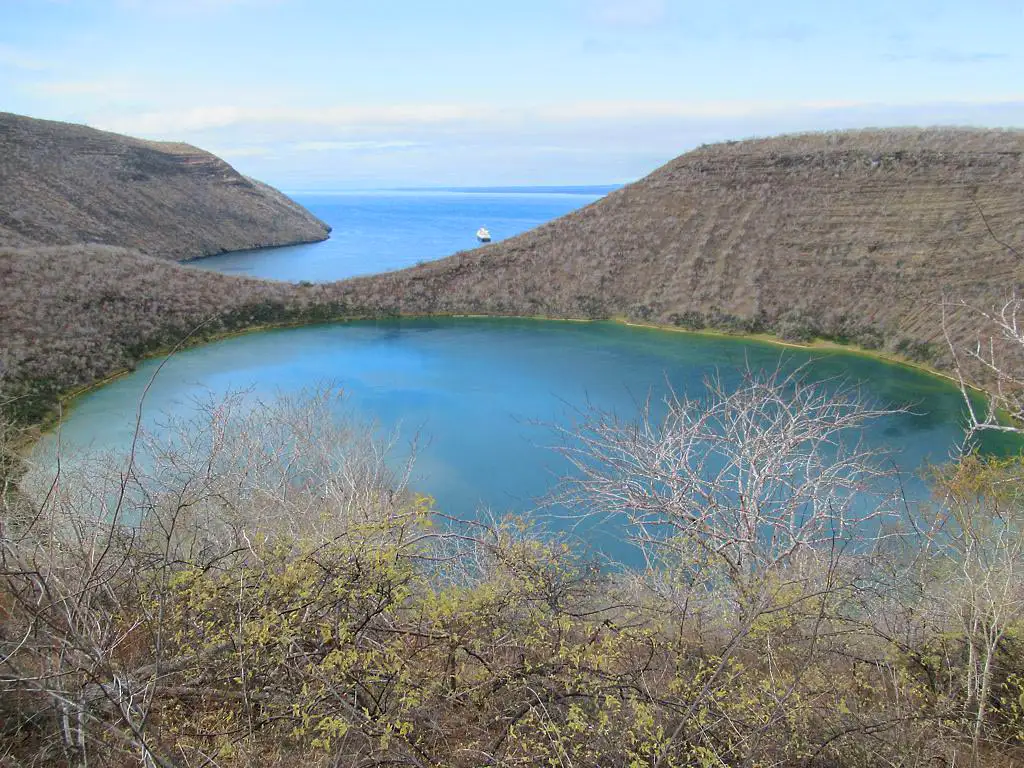
A narrow isthmus separates blue-green Darwin Lake from Tagus Cove. Image: Darwin Lake” by David Stanley , used under CC BY 2.0/ Compressed from original
Due to its position further west, not all cruises stop here. If you are set on visiting Isabela Island, choose a cruise itinerary that includes the western islands. The basic tourist infrastructure and airstrip make a stop here convenient for island-hoppers. Keep in mind that Isabela’s small airstrip only connects it to a couple of the other islands, not the mainland.
Maximum Altitude: 2,395 ft (730 m)
There are many interesting facts about San Cristobal Island, which was created by a fusion of now-extinct volcanoes. It is located approximately 600 miles from mainland Ecuador, and not only is it the easternmost island of the archipelago, but it is also one of the oldest islands and the first in the Galapagos to be permanently inhabited by humans. Settlers were drawn in by the only fresh-water lake in the entire region, El Junco.
It’s the second-most populous island after Santa Cruz. The largest settlement is Puerto Baquerizo Moreno, the capital of the entire Galápagos province. This picturesque town is home to a number of hotels and seaside restaurants, as well as the San Cristobal Interpretation Center, where you can learn more about the area’s natural and human history.
San Cristobal’s other claim to fame is that it was the first island visited by biologist Charles Darwin in 1835. Darwin studied the various endemic species found here, such as Galapagos giant tortoises. Today, La Galapaguera serves as a sanctuary and breeding ground for these threatened species.
Birders should visit Punta Pitt for the rare chance to spot red-footed, blue-footed, and nazca boobies nesting together. There are even more bird-watching opportunities at Cerro Brujo. From here, behold a postcard image of the iconic Kicker Rock sticking out of the sea. The area around the rock is a perfect snorkeling and diving spot where you can swim with rays, sea lions, and even sharks.
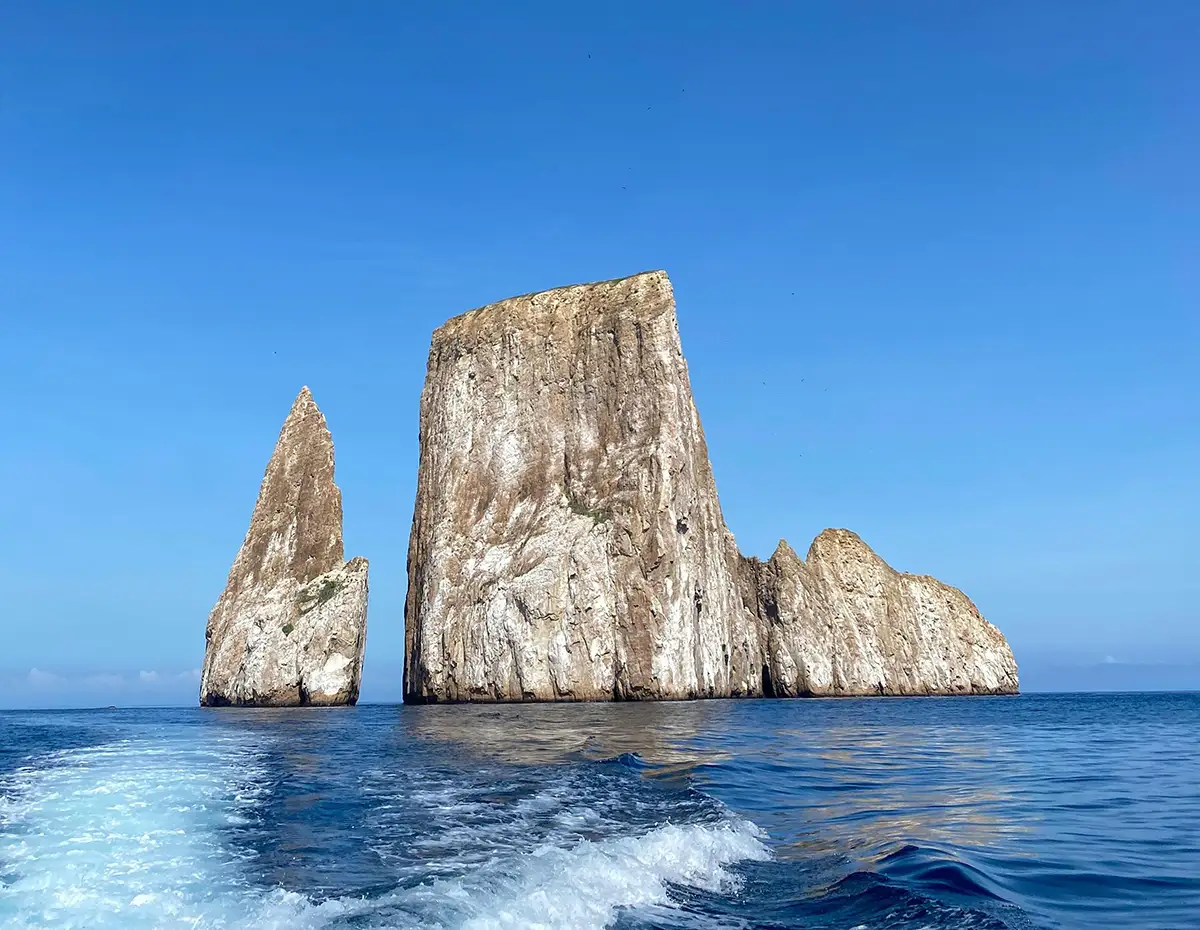
View of the Kicker Rock, San Cristobal Island, Galapagos, Ecuador. Photo by Abigail Ramirez on Pexels.
A few minutes away is one of two airports in the entire Galapagos that serves flights to the mainland. This makes San Cristobal a common entry point for visitors and a starting point for many cruise itineraries.
Floreana Island was the first island to be visited by humans, yet, without a source of freshwater, the remaining population today is less than 200. Most of the people here live in Puerto Velasco Ibarra, a small outpost on the western coast of the island. There are a couple of hotels and restaurants, though tourist facilities are very limited.
The island has an interesting history that travelers can uncover. From the 1600s on, whalers, pirates, and other adventurers passed through Floreana. It was a group of whalers who, in the 19th century, set up a wooden barrel at Post Office Bay. Seamen could leave letters here with addresses written on them, and whenever one of them was departing the island, they would take with them any letters that they were able to deliver by hand. This early messaging system allowed the people at sea to remain in contact with their loved ones at home. Visitors can still pay a visit to this historic site and participate in the tradition of delivering other travelers’ mail.
In addition to the fascinating mailing system, there are several endemic species waiting to be discovered. Cormorant Point features a green-tinted beach and a photogenic lagoon where you will find a large group of pink flamingos. Other wildlife species in this area include Sally Lightfoot crabs, green sea turtles, and joint-footed petrels.
A short boat ride from the island is Devil’s Crown. This volcanic cone, semi-submerged under the sea, is a hotspot for snorkeling and diving because of its coral reef. It attracts an abundance of colorful fish, sea lions, penguins, and dolphins.
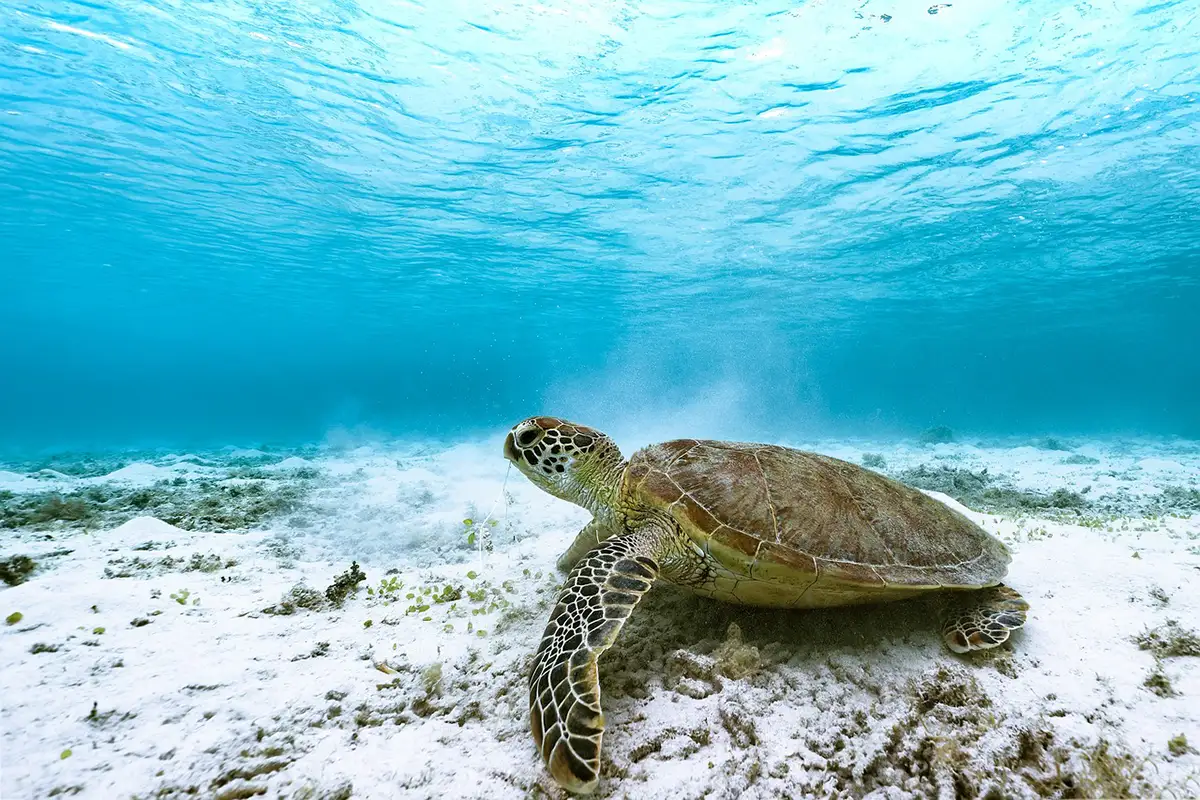
Green sea turtle. Photo by Kanenori on Pixabay.
Visitors can learn about Floreana’s exciting history on a cruise or on an island-hopping tour. Staying overnight in Puerto Velasco Ibarra is possible; however, accommodation is limited, and most tourists prefer to return to Santa Cruz.
Bartolome Island is often quoted as the most photographed part of the Galapagos, and for good reason. This young island is filled with spectacular volcanic rock formations of different colors. For 360-degree views of the surrounding scenery, climb several steep wooden stairs to reach the island’s volcanic cone. From this panoramic viewpoint, more than 10 surrounding islands are visible on a clear day. It also provides sweeping views of Pinnacle Rock, jutting out of the ocean. This mighty volcanic spire is another of Bartolomé’s most famous attractions. In fact, the postcard image of Pinnacle Rock is one of the most recognizable sites in the whole archipelago. It was even used as a filming location for the 2003 blockbuster film Master and Commander, starring Russell Crowe.
At the base of Pinnacle Rock, one can appreciate another of the island’s highlights, a colony of Galapagos penguins. This small penguin colony shares this spot with other wildlife, including marine birds and Galapagos sea lions. You can take incredible shots of some of the Galapagos’ most iconic animals all in one place.
Nearby, travelers can relax on Playa Dorada, the “golden beach” that runs along the bay. Its waters are excellent for snorkeling with sea lions and penguins. The cold-water current attracts a number of other exotic marine wildlife, such as white-tipped reef sharks and sea turtles. Bartolomé’s combination of iconic landscapes and both land and marine wildlife make it a must-visit destination on this list.
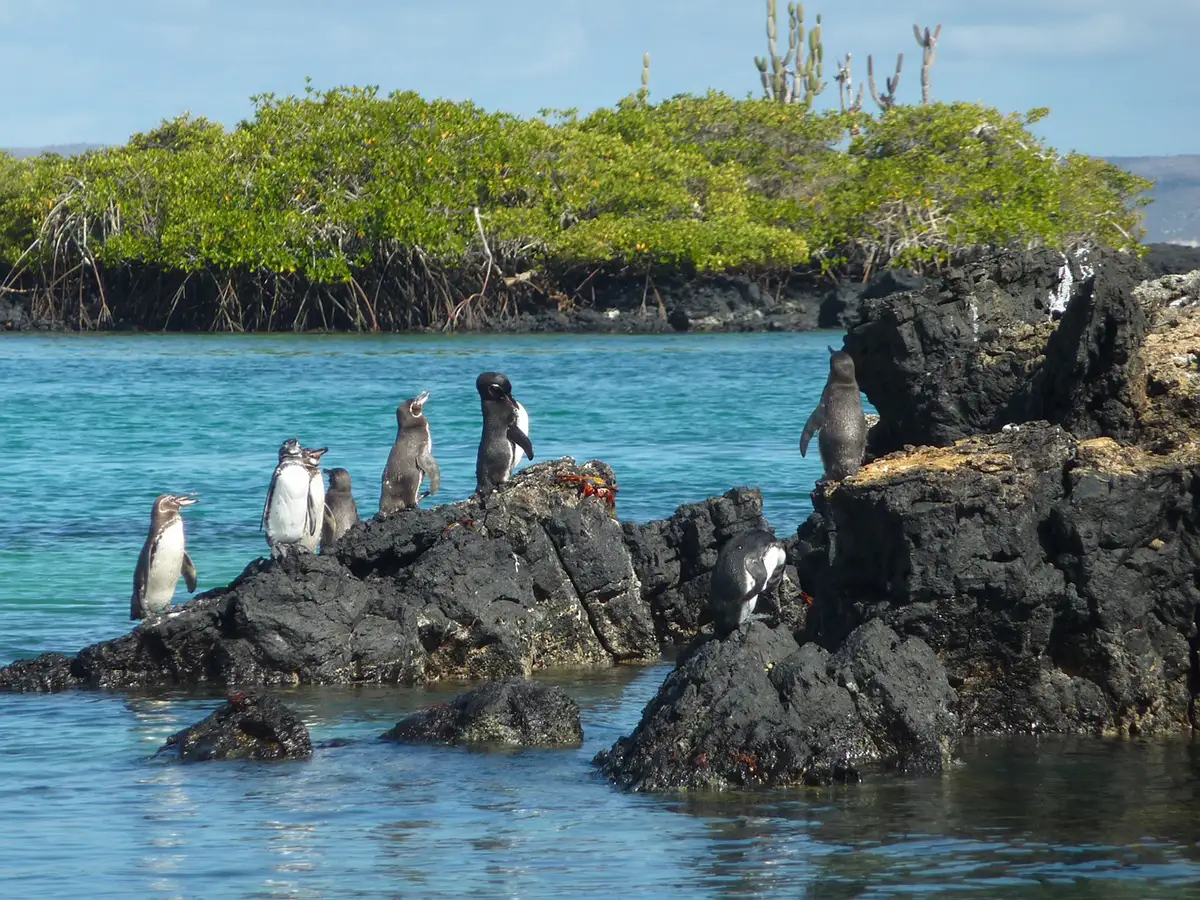
Galapagos penguins. Photo by sebastian_photos on Pixabay.
Cruise ships include a stop here on most itineraries. For island-hoppers, it’s also possible to arrange a day trip here from Santa Cruz Island. As one of the most demanded tours, it is recommended to book this one in advance.
Fernandina Island is geologically the youngest and westernmost island of the whole Galapagos archipelago. The island was formed by the La Cumbre volcano, which remains the most active volcano on any of the islands. Its latest eruption occurred in January 2020. The volcanic activity has left the island with little vegetation, and only mangroves and lava cacti have adapted to these tough conditions. These plants can be found scattered across the island in dense forests.
Fernandina Island is one of only two islands where you can spot flightless cormorants. These birds demonstrate how different species adapted to their environment in the Galapagos. Researchers hypothesize that they lost their ability to fly due to a lack of predators. Instead, they are excellent swimmers and use this ability to catch fish. There is also a sizable population of land iguanas, which perch precariously on the island’s volcanic cliffs.
Fernandina’s only visitor site is Punta Espinosa, found on the northeastern tip of the island. Walking around the site, you will notice its jet-black, barren landscape and lava flows. The nutrient-rich water of this area attracts heaps of marine life, making it a great place to spot manta rays, hammerheads, whale sharks, and dolphins. You will also find the largest colony of marine iguanas here.
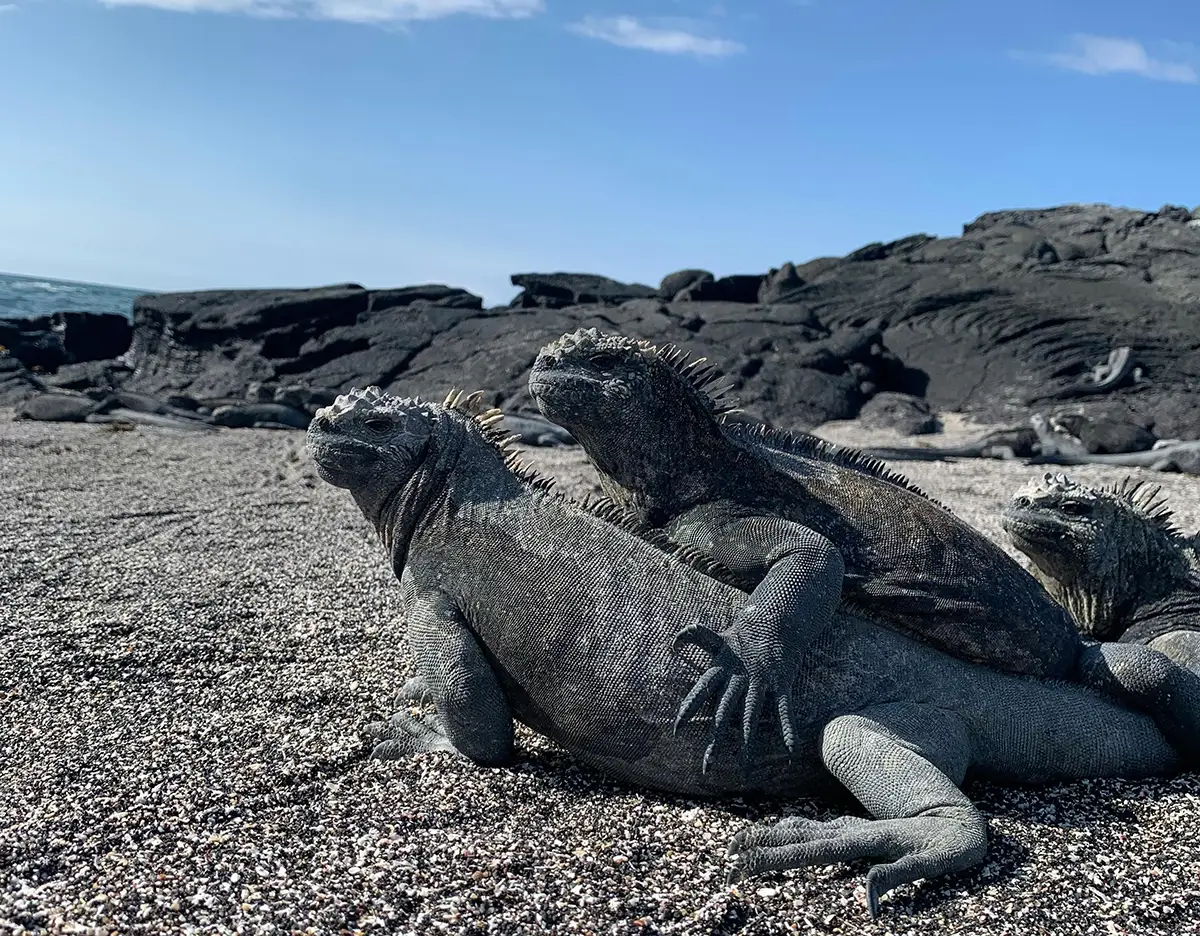
Marine iguanas sunbathing. Photo by Natalia Gómez gilser on Pexels.
Due to its remote location, getting here on an island-hopping trip is all but impossible. To explore Fernandina Island, choose a cruise itinerary that visits the western islands. This will also usually include a stop at Isabela.
Santiago Island was the second of the Galápagos Islands visited by Charles Darwin. The island had long been a source of water, wood, and tortoises for buccaneers and whalers. The Spaniards showed Darwin and his companions the salt mine, which is now a visitor site.
James Bay includes three visitor sites. Espumilla Beach, on the north end of the bay, is a sea turtle nesting location, while Puerto Egas, on the south end of the lagoon, is where two distinct trails begin. The first is along the coast to the fur seal caves. The Galápagos fur seal enjoys rocky coastlines with shade; therefore, the caves near Puerto Egas are suitable. The coastal trail ends at the caves. The second trail heads to the Salt Mine Crater. The inland trail is approximately 1.9 miles long and ends at the top of the salt mine crater. In the 1920s and 1960s, corporations harvested salt from the crater. The mine is a tiny volcanic cone with a seasonal salt-water lagoon populated by flamingos and other birds. Galápagos hawks are frequently seen in the area too.
The Sullivan Bay visitor site offers a rare opportunity to stroll across a recent lava flow from the second half of the 19th century and admire its stunning structural features. Although there is little wildlife to speak of and lava is the major attraction, remember to bring your camera.
Chinese Hat, or Sombrero Chino in Spanish, is a small island approximately 650 feet off the southeastern coast of Santiago. Seen from the north, the small volcanic cone is the shape of a Chinese hat, hence the name. The small channel of turquoise water is a prime snorkeling site, where it is possible to see sharks, sea lions, penguins, and rays.
Source: Galápagos Conservancy. Santiago Island.
https://www.galapagos.org/about_galapagos/the-islands/santiago-island/
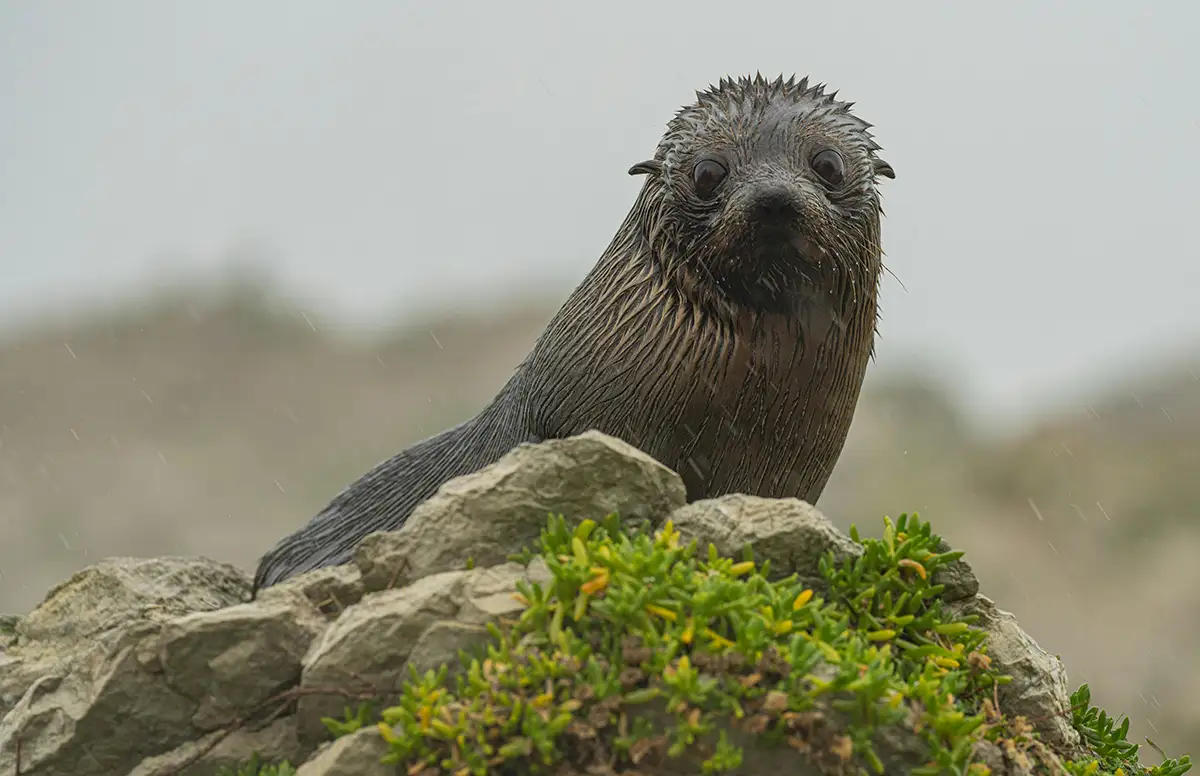
Galapagos Fur Seal Lying on Pile of Stones in the Rain. Photo by Ethan Brooke on Pexels.
The best way to visit Santiago Island is on a Galapagos cruise, but visitors can learn about Floreana’s exciting history on an island-hopping tour too.
North Seymour, named after English nobleman Lord Hugh Seymour, was formed by a succession of uplifts of subsurface lava, along with Baltra (also known as South Seymour) and the northeastern half of Santa Cruz, resulting in flat plateaus. In the early 1930s, members of the Hancock Expeditions relocated roughly 70 land iguanas from Baltra Island to North Seymour in an attempt to improve their survival conditions. As a result, the island is home to nearly 2,500 land iguanas today, even though they are not native to North Seymour Island. The island also has a significant population of blue-footed boobies, swallow-tailed gulls, common noddies, and frigatebirds. As a result, the island is home to nearly 2,500 land iguanas today, even though they are not native to North Seymour Island
On either of the trails, the long or the short one, visitors will have sufficient opportunity to observe the Galapagos’s largest colony of magnificent frigatebirds, blue-footed boobies, and land iguanas. Sea lions and marine iguanas are also common along the coast. At times in the past, marine iguanas on the island have been observed eating land vegetation, which is extremely unusual behavior for this species.
Mosquera is a small, sandy islet with an area of only 395 feet by 1970 feet (120 meters by 600 meters). It sits in the channel between Baltra and North Seymour, and while it is almost devoid of vegetation, it has one of the largest populations of sea lions. Its sandy expanses make it the perfect spot for visitors to observe sea lion behavior. Additionally, it is also a beautiful site to observe lava gulls, coastal birds, and Sally lightfoot crabs.
There are also three dive sites around North Seymour, with all of them providing good opportunities to observe sea lions, large schools of fish, some sharks, rays, and sea turtles.
Source: Galápagos Conservancy. North Seymour Island.
https://www.galapagos.org/about_galapagos/the-islands/north-seymour-island/
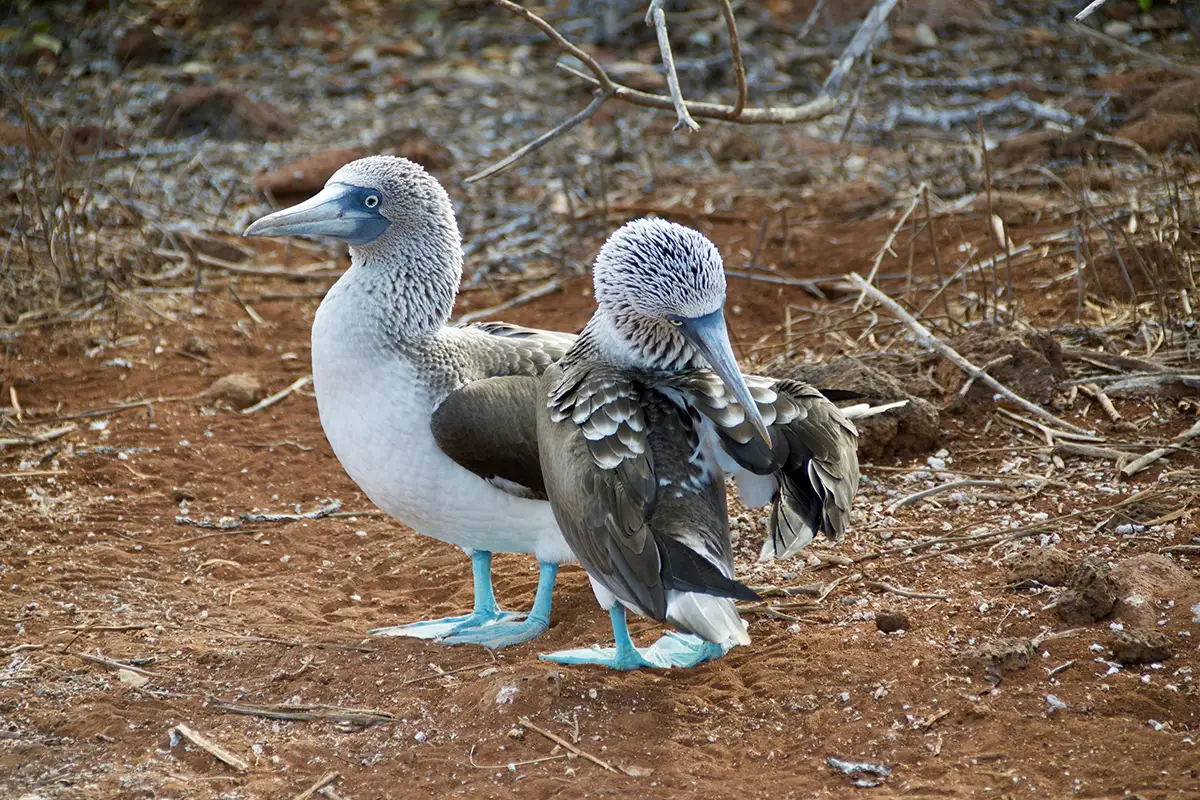
Pair of blue-footed boobies. Photo by Andy Brunner on Unsplash.
Cruise ships include a stop here on many of the itineraries. For island-hoppers, it’s also possible to arrange a day trip here from Santa Cruz Island.
Española Island is often referred to as the jewel of the Galapagos due to its many natural wonders. It is also the only place in the world where you can find a waved albatross nest. Every waved albatross flocks here during the mating season, from April to December. Watch their curious mating ritual, which involves waddling, bill circling, and strange noises. Once a pair has bonded, they remain mates for life.
A great place on the island to see the waved albatross is Punta Suarez. To get here, you will first need to take a boat and then hike 1.9 miles (3 km) to reach this magnificent point. Yet the journey is definitely worth it. The area is a sanctuary for birds, such as the Española mockingbirds, swallow-tailed gulls, and waved albatrosses.
If that wasn’t spectacular enough, there is a naturally occurring blowhole shooting water up 75 feet (23 meters) in the air. Waves crashing into the black, rocky cliffs add a dramatic backdrop.
For a sunny day at the beach, head to Gardner Bay. The white, sandy shore is a perfect location to go snorkeling or just sit back and relax. Also, keep an eye out for bright red Española lava lizards and Española mockingbirds.
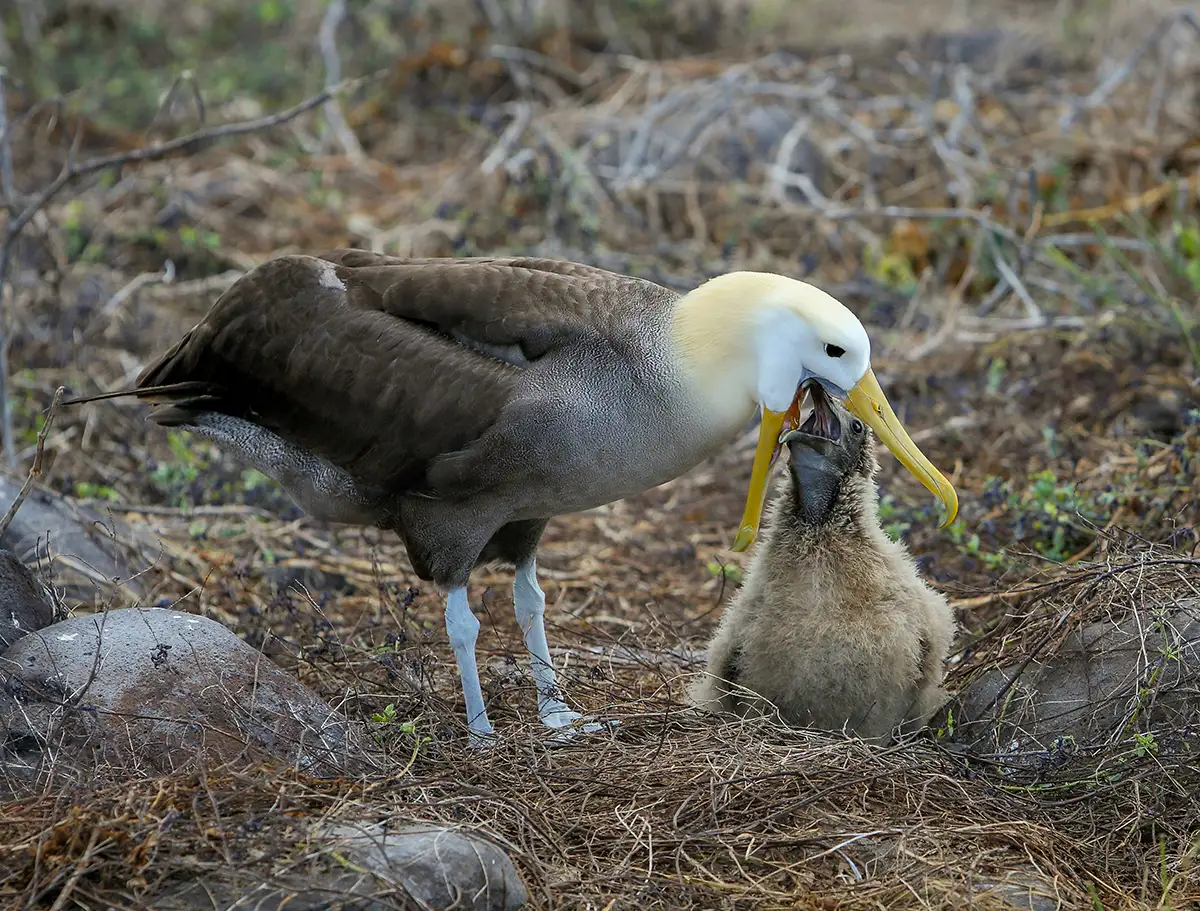
Waved Albatross feeding its chick. Photo by AussieActive on Unsplash.
Located in the extreme southeast of the archipelago, Española Island is far from its neighbors. The boat journey from Santa Cruz Island takes about 12 hours, making it difficult to visit when island-hopping. San Cristobal is closer, thus making it possible to arrange a trip from there. However, most visitors who come here arrive on a cruise. Despite being out of the way, you won’t regret a trip to this gorgeous island.
Once you set foot on Rábida Island, the first thing you notice is the iconic red beach. Its distinctive appearance is due to the high iron content found in the soil. With such an unusual yet photogenic color, this is a prime location for photographers to bring out their artistic side. Along the red beach, you will notice marine iguanas and sea lions lazing in the sun. Dip into the turquoise sea for a great snorkeling experience. The surrounding area is home to sea turtles, reef sharks, eels, and even penguins.
Afterwards, follow the visitor trail inland, where the island will continue to surprise you. The 45-minute trail will lead you to a saltwater lagoon, home to a small group of flamingos. These birds get their vivid pink color by feeding on shrimp larvae. Back on the trail, keep a lookout for brown pelicans, known to rest on salt brushes found here. Be sure to bring a zoom lens to take up-close pictures of these elegant birds.
Aside from pelicans and flamingos, it is also home to Darwin’s finches, Galapagos doves, and mockingbirds, to name a few. Hop aboard a dinghy to circle the island’s shoreline and catch a better glimpse of these birds. You may even spot Galapagos fur seals dotted across the rocky cliffs.
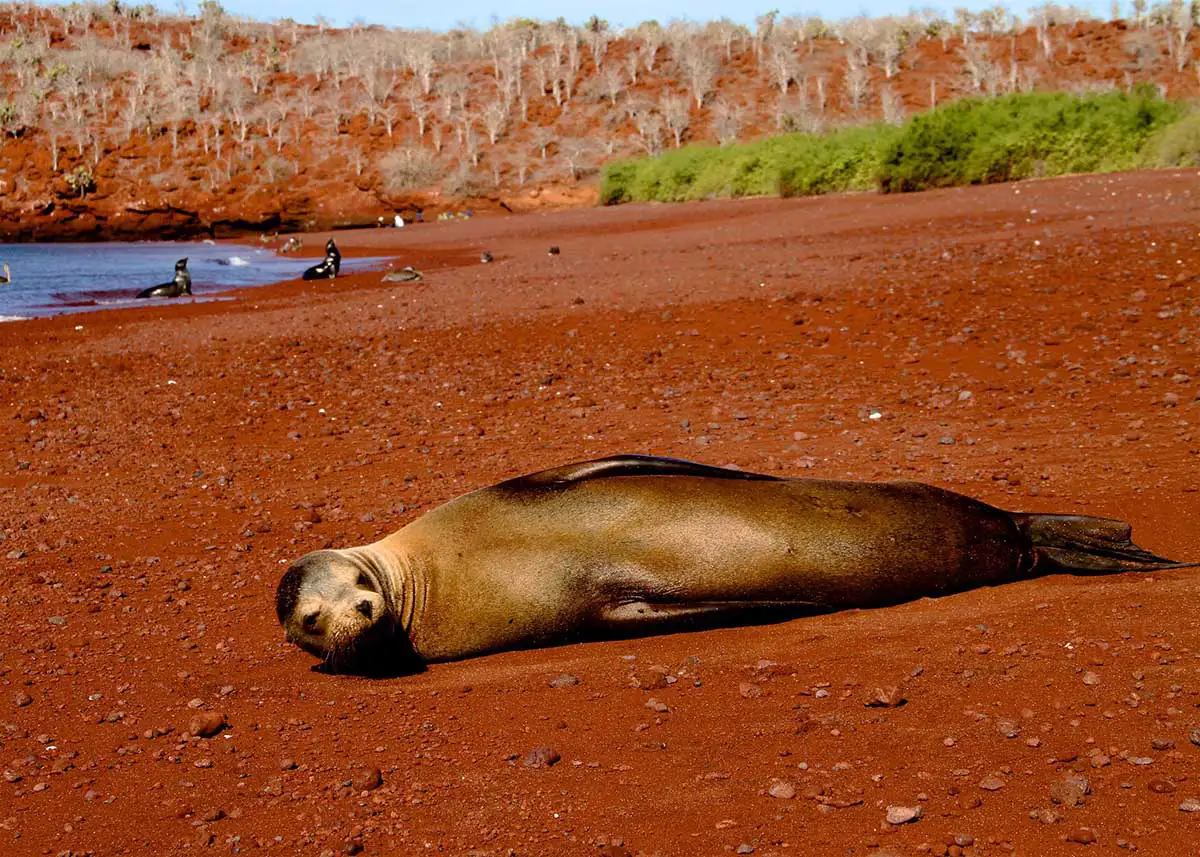
A sea lion resting on Rábida’s Red beach Image: by Ian Masias, used under CC BY 2.0 / Compressed from original
Rábida Island is a small volcanic island located just south of Santiago Island. There are no tourist facilities on the island, meaning there is no way to stay the night. However, its relative proximity to Santa Cruz means it is possible to visit on a day trip. Many cruise ships also make a stop here to explore the famous red beach.
Genovesa Island is a horseshoe-shaped island in the north of the archipelago. It is home to finches, red-footed boobies, swallow-tailed gulls, and frigatebirds, making it a birdwatcher’s paradise. In fact, it’s nicknamed “bird island." If visiting in May, during the mating season, visitors can observe the unique mating rituals performed by these species. Male frigatebirds puff out their chests like balloons to reveal a bright red gular pouch. These vibrant pouches attract females, while other jealous males attempt to puncture them.
Head to Darwin Bay, where you can relax on a pristine, sandy beach made from crushed coral. Aside from admiring the many bird species, this area is a great snorkeling and diving spot. You will often find sea turtles, sea lions, and starfish. Some lucky visitors may even get the chance to see hammerhead sharks.
For even more birding opportunities, take a dinghy around the island to reach Prince Philip’s Steps. Climb the 81 stairs up the steep, rocky cliffs while admiring red-billed tropicbirds flying overhead. Once you reach the top, you can follow a narrow path through a Palo Santo forest and an open lava field. From up here, admire red-footed boobies, Nazca boobies, finches, and mockingbirds. Your guide will also help you keep a lookout for short-eared owls.
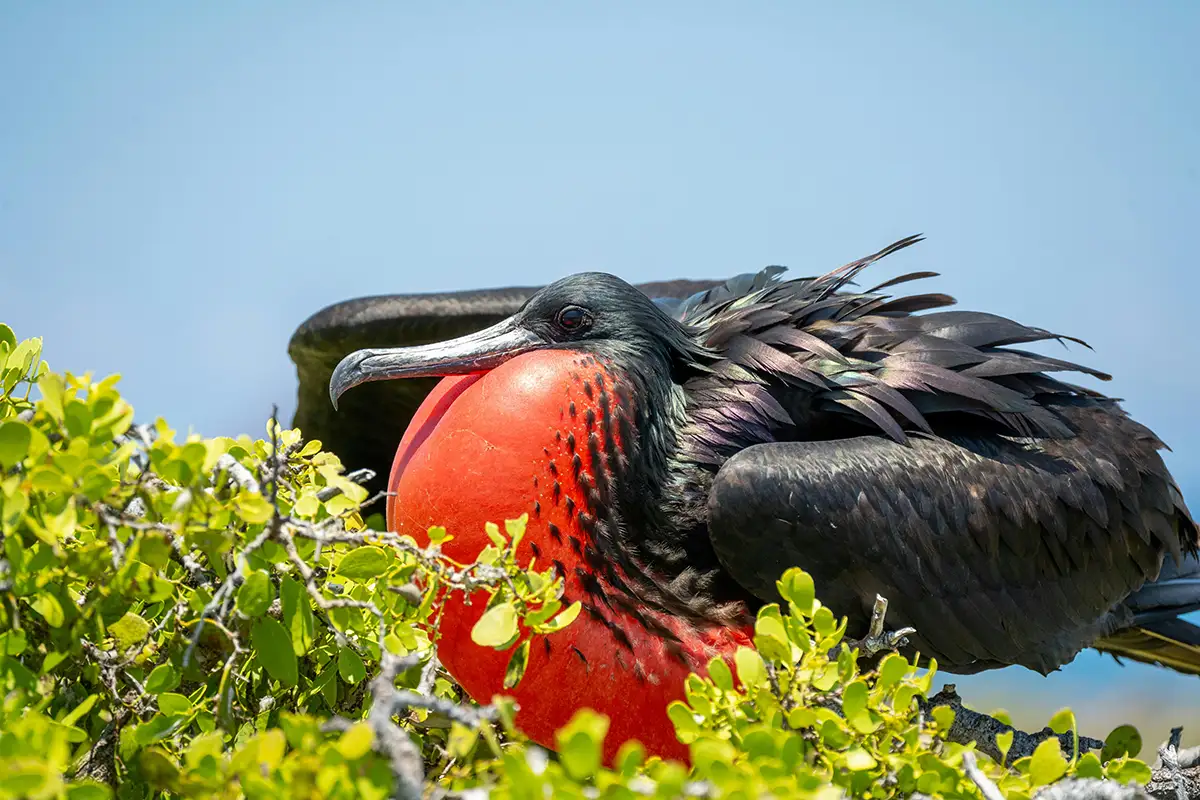
Close-up of a Magnificent Frigatebird. Photo by Haha on Pexels.
Genovesa Island is a must-visit island for both experienced and novice bird lovers. However, all visitors to the island must opt for a cruise. Its distance from Santa Cruz means there is no way to get here on an island hopping tour. Make sure that your cruise itinerary covers the northern part of the Galapagos, as not all cruises make a stop here.
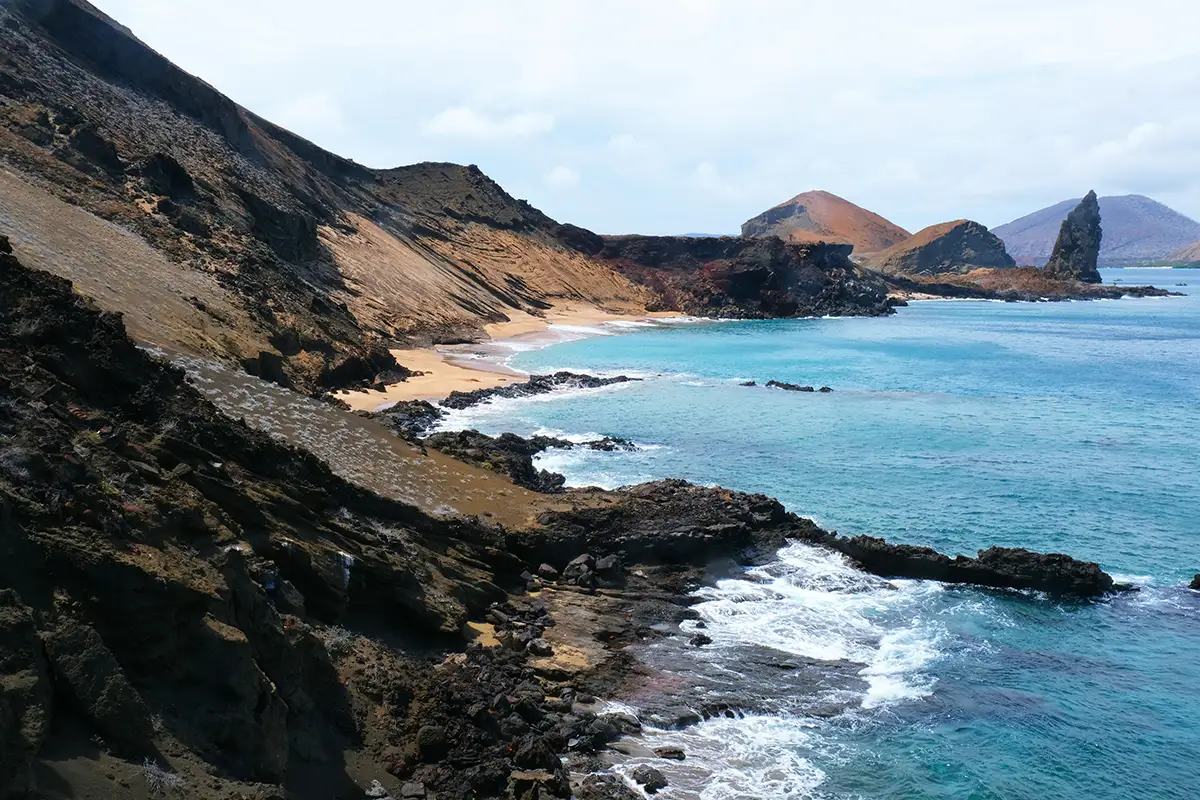
View from Bartolome Island. Photo by Nathalie Marquis on Unsplash.
The UNESCO-protected Galapagos National Park attracts flocks of tourists every year. The Galapagos has it all, from unique flora and fauna to gorgeous landscapes and fascinating history. While this list is a summary of some of the best Galapagos islands, every island in the archipelago is stunning. No matter which islands you choose to visit, you are guaranteed to discover something magical around every corner.
Start planning your personalized Galapagos holiday now with tips from one of our expert travel advisors!
Passionate global traveler, Mikey, born in Prague to Czech-US parents, explored Latin America, taught in Salvador, studied in the UK, and calls Peru home.

Over 500 miles from the mainland, the Galapagos Islands are at the very top of the list of must-see places in Ecuador. The diversity of species seen on the Galapagos Islands is rivaled by few places in the world. There are so many unique species of flora and fauna scattered across the archipelago that to ask which are the best Galapagos islands to visit would be unjust. Instead, we have put together our list of top things to do in the Galapagos Islands that are sure to entice all types of travelers visiting a range of islands.
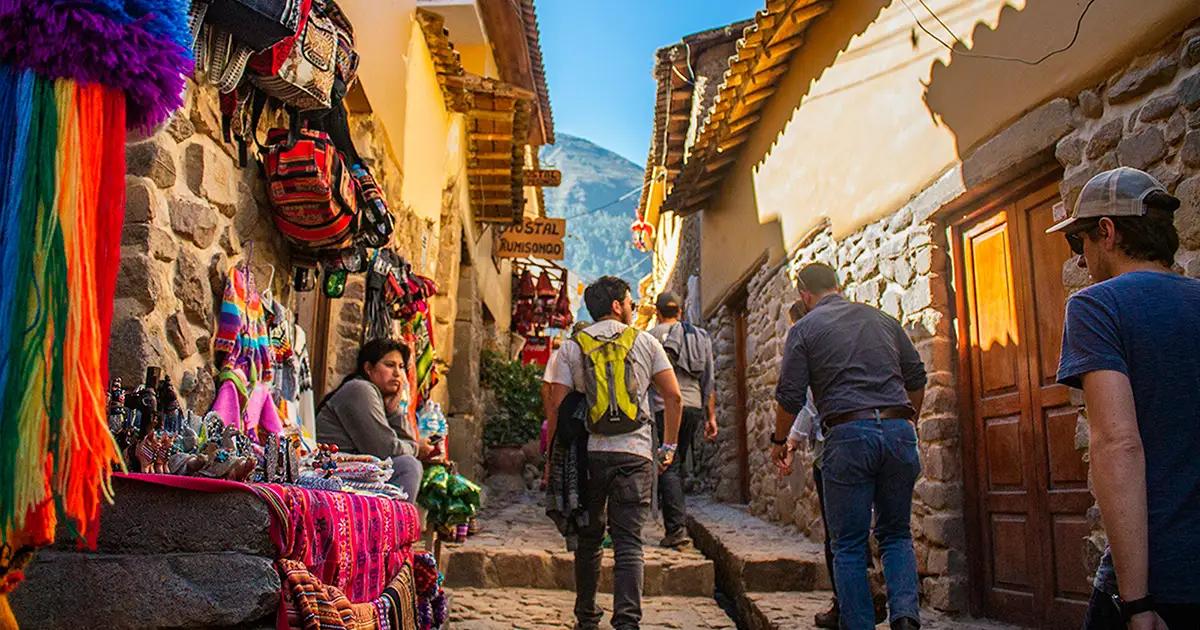
Discover the incredible things to do in Cusco, the historic heart of Peru. Once the capital of the Inca Empire, Cusco is now a treasure trove of Incan and colonial architecture, blended seamlessly with modern culture.